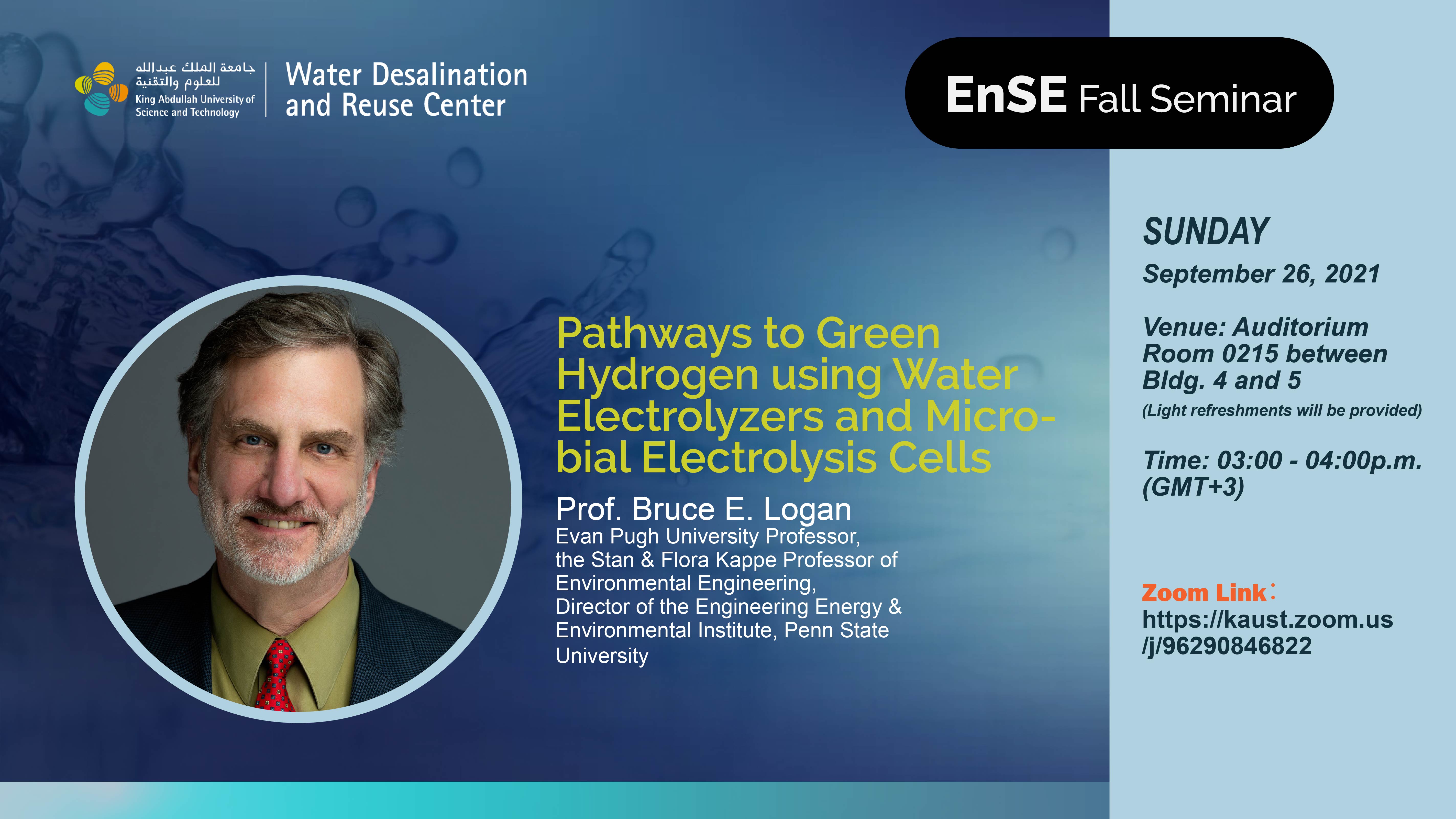



September 26, 2021, 3:00 – 4:00 p.m.
Auditorium 0215, level 0, between bldg. 4&5
Zoom Link: https://kaust.zoom.us/j/96290846822
Speaker: Professor Bruce E Logan, Penn State University
Host: Professor Pascal Saikaly
Abstract:
Hydrogen gas can be used for energy storage and as a fuel to power large transportation vehicles such as trucks, ships, and planes. H2 is central to all plans to decarbonize our energy infrastructure to address climate change, but it must be made without CO2 emissions from fossil fuels. Two methods of green hydrogen production are discussed in this presentation: using seawater in water electrolyzers (WE); and using biomass in microbial electrolysis cells (MECs). Reverse osmosis (RO) membranes present some interesting opportunities for their use in WE due to rejection of salt ions and passage of protons, hydroxide ions and water molecules. The performance of WE with RO membranes is compared to traditional PEM-based systems. The use of MECs, when combined with fermentation, could enable high conversion rates of biomass into H2 gas with greatly reduced electrical power requirements compared to WE. Recent advances in increasing power from microbial fuel cells (MFCs) can be translated to MECs to produce higher generation rates of H2 gas in these systems. Advances in MFCs in terms of field demonstration of the technology, along with ways to increase power are briefly reviewed. Then it is shown that using these MFC advances the performance of MECs can be increased, opening the door for their application for both waste biomass conversion and H2 production.
Bio:
Professor Bruce E. Logan is an Evan Pugh University Professor in Engineering, the Stan & Flora Kappe Professor of Environmental Engineering, and Director of the Engineering Energy & Environmental Institute at Penn State University. His current research efforts are in renewable energy production and the development of an energy sustainable water infrastructure. Dr. Logan has mentored over 140 graduate students and post docs and hosted over 40 international visitors to his laboratory. He is the author or co-author of several books and over 550 refereed publications (>97,000 citations, h-index=154; Google scholar). Logan is a member of the US National Academy of Engineering (NAE) and the Chinese Academy of Engineering (CAE), and a fellow of the American Association for the Advancement of Science (AAAS), the International Water Association (IWA), the Water Environment Federation (WEF), and the Association of Environmental Engineering & Science Professors (AEESP). Logan is a visiting professor at several universities including HIT, Tsinghua University, Dalian University of Technology (China), with ties to several other universities around the world. He received his Ph.D. in 1986 from the University of California, Berkeley, and prior to joining Penn State in 1997 he was at the University of Arizona in Tucson.